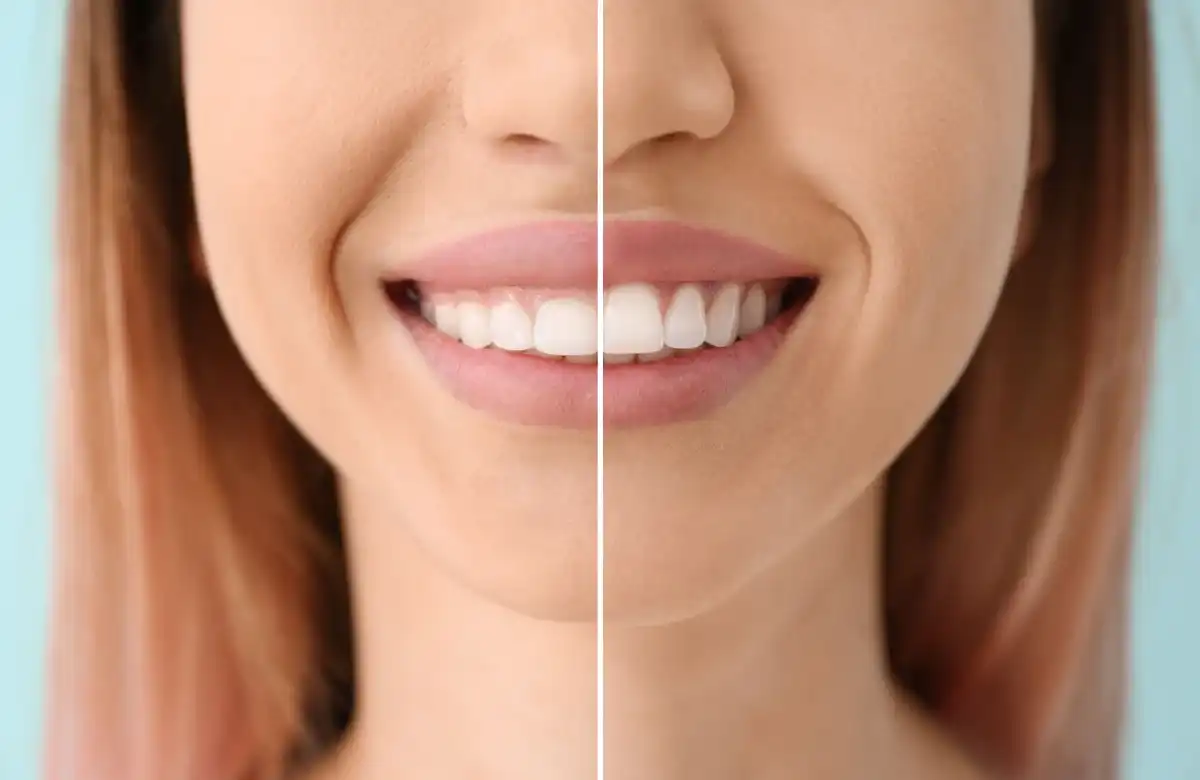Gingivectomy: Treatments Options, Recovery & Cost


People get gingivectomies for different reasons. The most common is because they have a gummy smile (where their teeth look too short) or there’s an overgrowth of tissue because of medication and/or hormonal changes.
You’ve probably heard the root word “-ectomy” used in the past. Like appendectomy or tonsillectomy. Basically, it means surgically taking something away from a certain part of your body. In this case, a gingivectomy involves removing excessive gingiva, or gum tissue, from inside your mouth.
What Is A Gingivectomy?
A gingivectomy is a minimally-invasive to moderate type of oral surgery where a dentist, periodontist, or oral surgeon removes some of the gum tissue from your smile. By removing the gingiva, the procedure manages tissue overgrowth and helps teeth to look healthier.
Most people don’t get gingivectomies until they’re an adult. If you’ve taken medications (such as certain types of blood pressure pills) or experienced hormonal changes (like pregnancy gingivitis) where your gums suddenly grow larger and look unnatural, a gingivectomy is the best way to get your smile looking like it’s supposed to. Or they talk to their dentist about getting one because they have a gummy smile that makes their teeth look short.
It's also common for teenagers to need gingivectomies after the removal of their braces.
Instead of opting for a more expensive cosmetic treatment, getting a gingivectomy is the more cost-effective and less invasive solution. You usually see dramatic results on the same day, as long as it’s performed with a laser.

What’s The Difference Between Gingivectomy And Gingivoplasty?
When most people consider gum plastic surgery, they think of a gingivectomy. Gingivectomies involve removing excessive gingiva, revealing more tooth structure.
However, there’s another type of procedure called a gingivoplasty, which includes reshaping of the gum tissue to make it look healthier. So, if the area was traumatized or had a disease and doesn’t look normal, a gingivoplasty would be like gum plastic surgery to help restore the natural-looking anatomy of your smile.
Should I Consider A Gingivectomy?
When it comes to cosmetic reasons, gingivectomy costs are modest compared to a dramatic smile makeover with veneers or crowns on every tooth. But even better than that is how minimally invasive the procedure can actually be. These days, a usual gingivectomy procedure is completed with a soft tissue laser.
There are also instances where a gingivectomy plays a specific health role, rather than improve your smile’s appearance. If you used to have gum disease but still have the deep pockets around your teeth, you can’t physically keep those areas clean on your own. Pocket reduction surgery — aka periodontal gingivectomies or crown lengthening — can shorten the depth of your gum pocket by removing some of the detached gingiva around your tooth. Shorter pockets are easier to keep clean and healthy.
If you want to know if a gingivectomy is right for you, ask your dentist. Not all practices offer this service (some do, some don’t,) so it might be something they have to refer you to an oral surgeon or periodontist to discuss.
What To Expect From Surgery Procedure
When you’re thinking about getting a gingivectomy, the first step is having a consultation. Your dentist will examine your mouth and determine if you’re a candidate for gum plastic surgery. If you are, they’ll give you a treatment plan that lists the time involved, gingivectomy cost, and if any other procedures are needed.
When you’re ready to schedule the surgery, you can expect the appointment to be similar to a routine dental treatment. Your dentist will rub some numbing gel on your gums and possibly apply a small amount of local anesthetic. Since most dentists use lasers nowadays, there’s less of a need to numb your mouth if you’re getting a gingivectomy.
Conventional gingivectomies that are performed with a scalpel tend to be more invasive, and thus require an anesthetic. If this is the type of procedure that you need, you might also want to ask about light sedation options such as nitrous oxide.
Scalpel Vs. Laser Gingivectomy Procedures
In the past, a typical gingivectomy was more of an invasive dental procedure that intimidated a lot of people. That’s because it was usually performed with a scalpel and was thus more traumatic to the patient. Even the healing time took a couple of weeks.

Dentists prefer working with lasers because of how much safer they are for the patient. They shorten the procedure time because there isn’t any bleeding and you won’t need to wear a medicated dressing over your gums.
Are lasers safe? Absolutely! There are different types of dental lasers for different procedures. Each one is FDA approved, meaning it’s backed by extensive research to show it’s safe and healthy both for the patient, and your dentist to use it on an everyday basis.
Recovery From A Gingivectomy
Here’s the great news. If you’re getting a dental laser gingivectomy, you’re going to have practically no downtime for recovery. Once any numbing medication wears off, you might have a tiny bit of irritation but that’s about it. Remember, the laser prevents swelling and inflammation, and those are the biggest factors when it comes to discomfort! Laser gingivectomy patients can usually plan to just go about business as usual.
Now, if you need a surgical gingivectomy with a scalpel, you’re going to need more time to recover. Lasers sort of “pre-heal” the surgical site, but a scalpel can’t do that. Instead, your dentist will need to put a medicated dressing over your newly created gumline to prevent bleeding, offer pain relief, and limit any irritation or trauma to the site. A week or so later, your dentist will remove the dressing and check the gingiva underneath.
You want to ask your dentist to perform the gingivectomy if they use a dental laser. Opting for that route of care means you’ll be back to your usual routine with a healthier-looking smile in a fraction of the time compared to people who need more aggressive surgery with a scalpel. I know it sounds scary, but there’s just not any other way to say it.
How Much Does It Cost?
If you’re paying for a gingivectomy without any type of dental insurance, you can expect an average gingivectomy cost of around $200 to $400 per tooth. A lot of the cost will depend on which type of surgical method is being used (scalpel vs. laser) and whether or not it’s for a health reason. So for instance, if your gum plastic surgery or crown lengthening is for managing gum disease, there’s a better chance of your insurance covering it. If it’s for a gummy smile and more cosmetic in nature, you might have a harder time getting your insurance to pay for the procedure. Being able to make the claim that your gingivectomy will have some type of oral health benefits can support the insurance claim and likelihood that it will receive some type of coverage.
Your dentist can get a breakdown of your insurance coverage beforehand so that they can compare your benefits to the gingivectomy cost, and then you’ll have a good idea as to how much the overall treatment will be.
If you’re looking for affordable gummy smile treatment with fast results, then a gingivectomy is usually your quickest, easiest, and most cost-effective option.
What You Need To Know About Gingivectomies And A Gummy Smile
Gingivectomies are when your dentist reduces the amount of gingiva (aka gum tissues) that you see when you smile. If you have a gummy smile or gingival overgrowth, a gingivectomy is usually the best treatment. Sometimes dentists also use a procedure called a gingivoplasty to help restore natural gum tissues that were damaged/injured and don’t look normal.
It’s also common for a gingivectomy to be used for better management of gum disease. Reducing the gumlines makes it so that there’s less of a pocket to have to clean out around each tooth.
While getting a gingivectomy used to be an invasive procedure with a pretty lengthy recovery time, today’s soft tissue lasers have made the treatment quick, comfortable, and easy to recover from.

Make your inbox smile!
Subscribe






